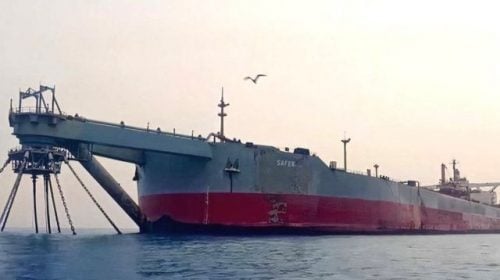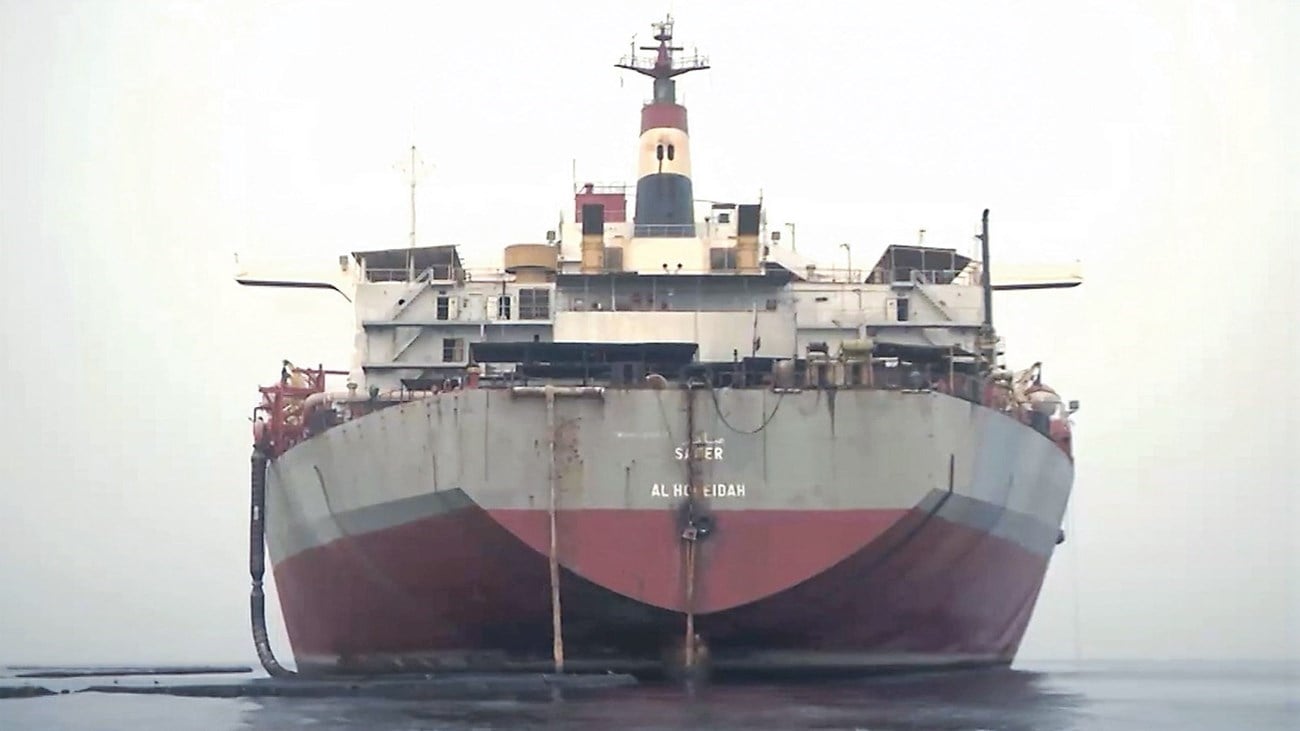The Safer tanker crisis off the coast of Yemen is approaching writing the end chapter, in conjunction with the conclusion of the United Nations agreement to purchase a giant oil tanker for use in storing oil.
The rickety reservoir, which has been stranded since 2015 and is moored off the port of Ras Isa on the western coast of Yemen, threatens an oil spill disaster that could be 4 times the amount of oil that leaked from the 1989 Exxon Valdez disaster near Alaska.
During the past months, the United Nations launched a fundraising campaign to implement an emergency plan to prevent the disaster of the Safer tanker explosion, which ended with its announcement, yesterday, Thursday, March 9 (2023), the signing of an agreement to purchase a giant oil tanker to be used to store the oil in the “Safer” tanker.
Discharge start date
The United Nations expected the replacement ship to arrive in early May. To start the process of unloading oil from the Safer reservoir, according to the data seen by the specialized energy platform.
For his part, UNDP Administrator Achim Steiner said that the program signed, on Thursday, an agreement with the Belgian company Euronav to secure the purchase of a very large crude oil tanker, as part of the process coordinated by the United Nations to remove more than a million barrels of oil from the Safer reservoir. Al-Rassi is located about 9 kilometers from the Ras Issa peninsula on the Red Sea coast and threatens a humanitarian and environmental catastrophe.
The Resident Representative of the United Nations Humanitarian Affairs Program in Yemen, David Gresley, said that the replacement oil tanker is scheduled to arrive in Yemeni territorial waters in the Red Sea in mid-May, in preparation for the start of the process of unloading 1.1 million barrels of crude oil inside the Safer floating tank, which Mooring off the western coast of Yemen.
He added that the replacement ship is currently in a dry dock to make adjustments and maintain it regularly before sailing towards the Safer tank to start the emergency rescue operation.
Gresley confirmed that the parties to the conflict continue to ratify the plan, we are currently in the operational phase, hoping to remove oil from the Safer reservoir during the next three to four months.
Implementation of the contingency plan
The UNDP Administrator noted that the purchase of the vessel marks “the beginning of the operational phase of the UN-coordinated plan to safely remove oil from the Safer reservoir and avoid the risk of a large-scale environmental and humanitarian catastrophe.”
He explained that the process is very difficult and complex, and the development program works around the clock “with experts from United Nations agencies including the International Maritime Organization, the World Food Program and the United Nations Environment Program among others, in addition to international consultations on maritime law, insurance and environmental impact to ensure a better dissemination Possible expertise to successfully complete this process.
Steiner stressed that more funds are still needed to complete the costs of the emergency phase of the UN plan, due to the high prices of vessels suitable for carrying out the operation.
He said: “The escalating costs mostly associated with the war in Ukraine have led to a significant increase in market prices for vessels suitable to carry out the operation, which means that more funds are still needed to complete the emergency phase of the plan.
Starting March 7, the United Nations has raised $95 million, of which it has received $75 million, to implement the emergency plan, which has a budget of about $129 million.
The United Nations had warned that in the event of oil contamination due to inaction, it would be the fifth worst disaster caused by an oil tanker, estimating the cost of clean-up operations alone at $20 billion.

American welcome
The United States welcomed the United Nations’ announcement of signing an agreement to purchase a tanker and use it to unload 1.1 million barrels of oil from the floating Safer reservoir off Yemen.
The US State Department said, in a statement, that the purchase of a tanker to empty the Safer reservoir is a crucial step in implementing the emergency plan set by the United Nations to avoid a regional environmental disaster and economic impacts in the Red Sea that will have global repercussions, with the exacerbation of the worst humanitarian crisis in the world.
She added that it is important to bridge the financing gap for the process of unloading the Safer tanker so that the United Nations can complete the emergency operation as soon as possible, noting that the United Nations needs an additional $34 million urgently to transfer oil from the tanker to the tanker.
The Safir tanker is a giant and rickety oil tanker, which is liable to collapse or explode at any moment, and the tanker carries 4 times the amount of oil that leaked from the Exxon Valdez tanker in Alaska more than 30 years ago.
The Safer oil tanker was manufactured 45 years ago and is used as a floating storage platform, loaded with about 1.1 million barrels of crude oil, with an estimated price of $40 million. The ship has not undergone any maintenance since 2015; This led to the erosion of its structure and the deterioration of its condition.
An oil spill from the Safer will destroy coral reefs, coastal mangroves and other marine life in the Red Sea, and millions of people will be exposed to air pollution. The impact of the leak on coastal communities will be devastating, as hundreds of thousands of fishing workers will lose their livelihoods overnight.
The following infographic prepared by the Energy Platform reviews the most important information about the Safer reservoir and the risks of oil leakage from it:

related topics..
Also read..

Leave a Reply